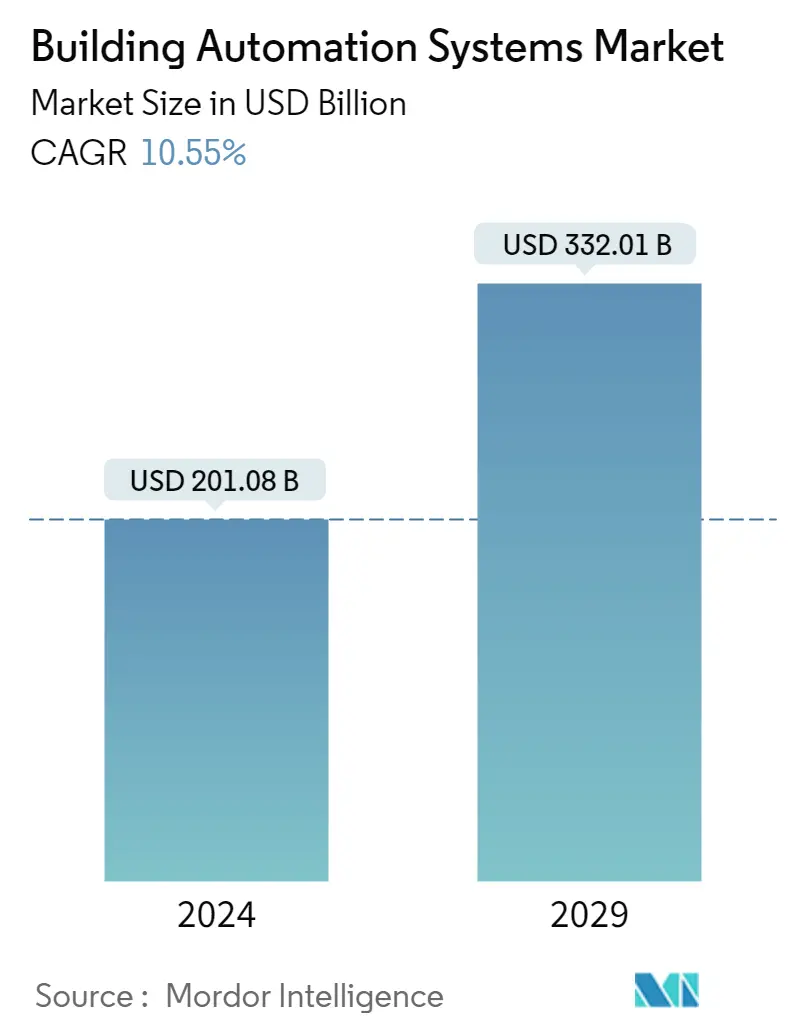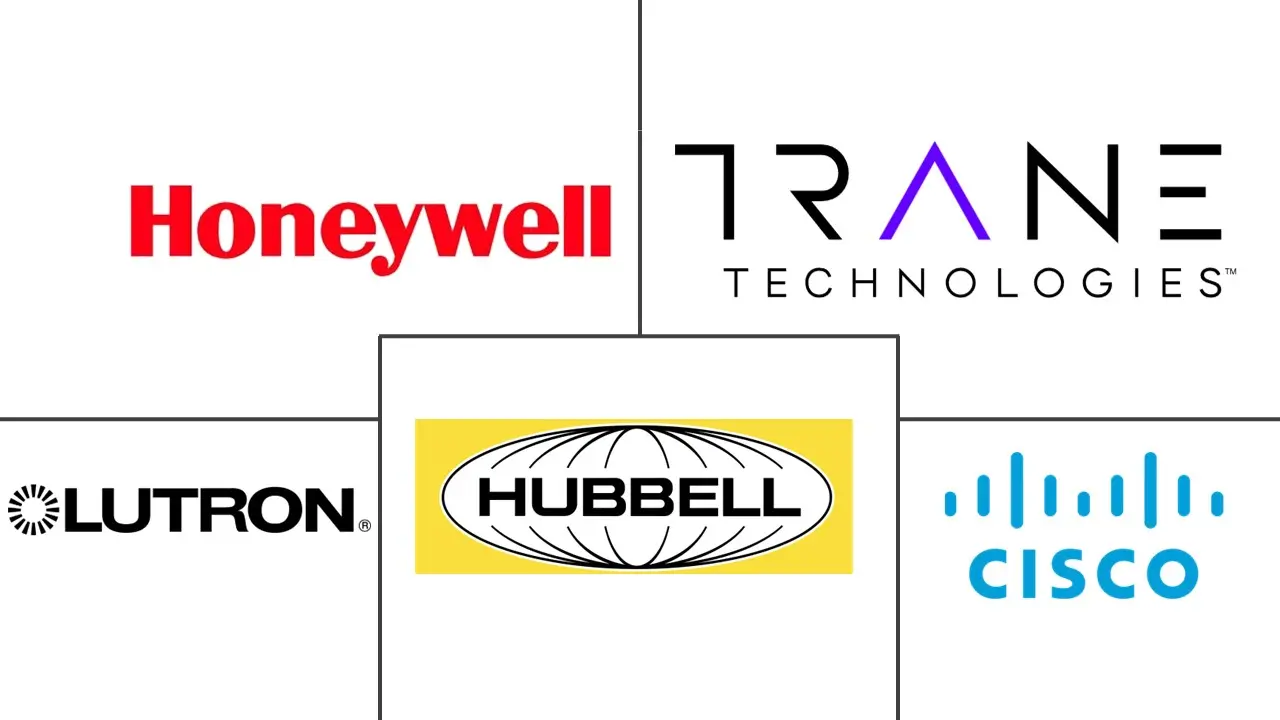Market Size of Building Automation Systems Industry

| Study Period | 2019 - 2029 |
| Market Size (2024) | USD 201.08 Billion |
| Market Size (2029) | USD 332.01 Billion |
| CAGR (2024 - 2029) | 10.55 % |
| Fastest Growing Market | Asia-Pacific |
| Largest Market | Europe |
Major Players
*Disclaimer: Major Players sorted in no particular order |
Need a report that reflects how COVID-19 has impacted this market and its growth?
Building Automation Systems Market Analysis
The Building Automation Systems Market size is estimated at USD 201.08 billion in 2024, and is expected to reach USD 332.01 billion by 2029, growing at a CAGR of 10.55% during the forecast period (2024-2029).
A building automation system (BAS), also referred to as a building control system or a building management system, is a system that controls several electric, electronic, and mechanical systems throughout a building. The market report tracks the revenue accrued by the companies through the sale of building automation solutions worldwide. Components like building management systems, lighting controls, fire detection, HVAC controls, and security systems are included in the scope of the study and span across end users like residential and commercial.
- The global market for building automation systems has been driven by the increased popularity of the Internet of Things and rising security concerns. According to Cisco's Annual Internet Report, by the next year, nearly 30 billion network-connected devices and connections are expected to exist, increasing from 18.4 billion in 2018. IoT devices are expected to account for 50% (14.7 billion) of all networked devices by 2023, compared to 33% (6.1 billion) in 2018.
- According to the US Department of Energy, buildings are the single largest energy-consuming sector of the US economy. They account for approximately 75% of the nation's electricity use and 40% of its total energy demand. The International Energy Agency states that to hit global net-zero targets, all new buildings and 20% of existing buildings must be zero-carbon as soon as 2030.
- According to a report published in Proceedings of the National Academy of Sciences, in the next 50 years, 30% of the world's estimated population is expected to reside in regions where the average temperature is above 29°C due to climate change-related rapid temperature rise and population expansion. Currently, this climate only exists on less than 1% of the Earth's land surface, mainly in the hottest regions of the Sahara desert. But by 2070, these temperatures are expected to be present across about a fifth of the planet's terrestrial surface.
- With the growth of technology, smart buildings are growing more and more complex, requiring quicker follow-up looks via retro-commissioning. Adding to that, the risks associated with sustained operational integrity are also mounting. Hence, the demand for comprehensive building automation systems is expected to spike. It is very important to establish the necessary communication between the system providers/designers and owners of the buildings to understand the functioning of the building.
- With the COVID-19 outbreak, most commercial and industrial construction projects started at a slower pace, while some were canceled. Production lines at some HVAC manufacturers had to be put on hold for several weeks, and installers saw their new installation projects being limited by sanitary guidelines. However, in European countries such as Italy, AHU sales benefitted from the increased ventilation demand due to COVID-19.
